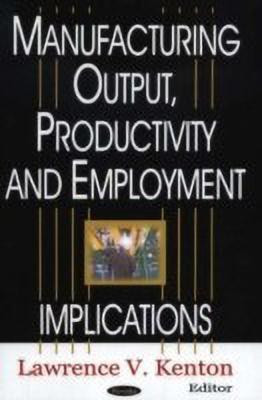Manufacturing Output, Productivity & Employment(English, Hardcover, unknown)
Quick Overview
Product Price Comparison
Employment in manufacturing has declined as a share of overall employment since 1960 at about the same rate of decline as the current-dollar share of GDP accounted for by manufacturing output. Both measures have fallen from 30% to less than 15%. Only about 15 million people are employed in manufacturing today. The all-time peak was more than 19 million in 1979, and each successive cyclical economic peak since then has seen fewer persons so employed. The overall trends in manufacturing mask highly divergent performances among different sectors. Analysis of performance in output and productivity among sectors indicates that they do not tend to cluster around overall average levels of performance. The book examines in more detail three specific manufacturing sectors: information technology industries, which have been high-growth areas of the economy and internationally competitive; the automotive sector, which has been affected by high levels of import penetration and is divided between the 'Big Three' US manufacturers and 'transplants'; and, textiles and apparel, which are facing a high level of import competition and have experienced large numbers of job loses. Globalisation, meaning the increased internationalisation of markets, inputs and investment, has had a major impact on US manufacturing. Since 1980, the US trade balance in manufactured goods has gone from a surplus to a deficit of nearly $500 billion. The deficit is concentrated in consumer and automotive products, with capital goods maintaining a small surplus as of 2002. This book concludes by examining various approaches to industrial competitiveness policies.


